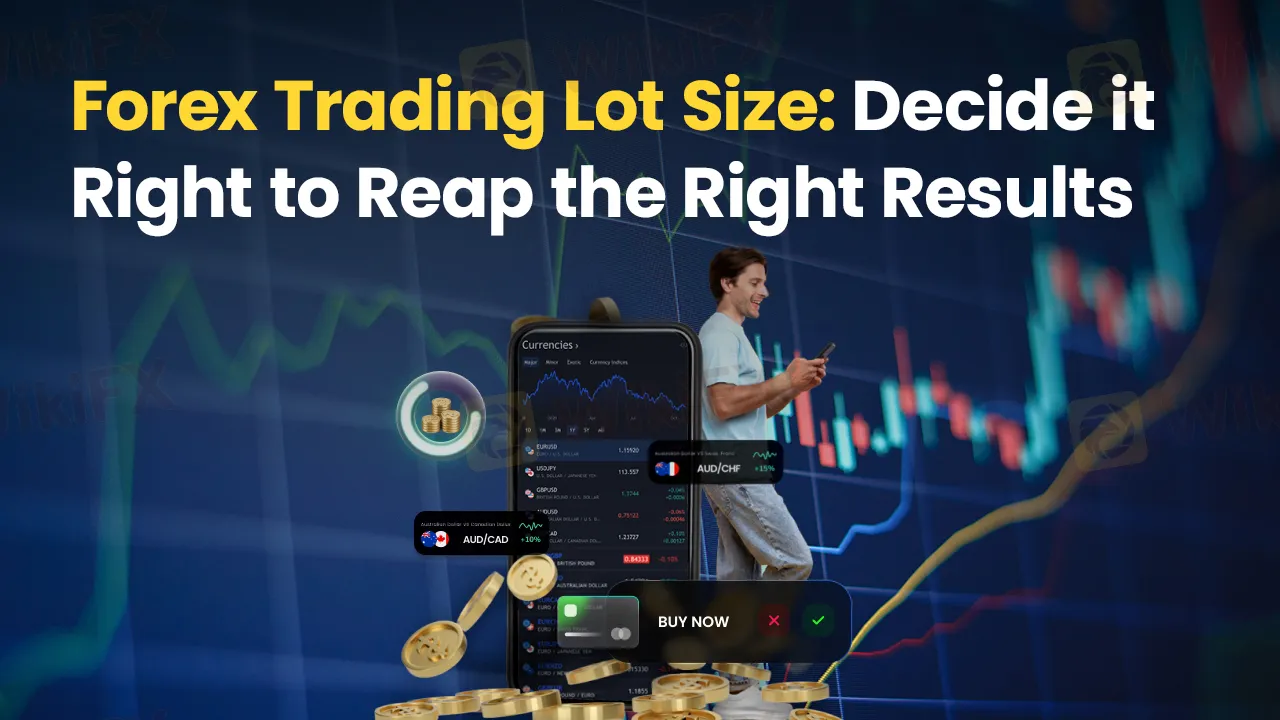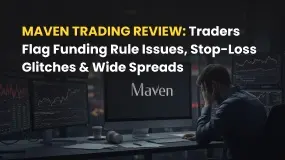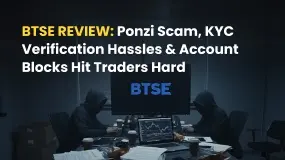简体中文
繁體中文
English
Pусский
日本語
ภาษาไทย
Tiếng Việt
Bahasa Indonesia
Español
हिन्दी
Filippiiniläinen
Français
Deutsch
Português
Türkçe
한국어
العربية
Forex Trading Lot Size: Decide it Right to Reap the Right Results
Abstract:Determining the right forex trading lot size is pivotal to enjoying a long run in the forex market. Go through this guide to know how to do it.

Gaining from forex investments depends on various factors such as deciding the right lot size. The lot size helps manage both potential profits and risks in equal measure. The forex trading lot size represents the number of units of the base currency a trader can buy or sell in one transaction. Determining the right forex trading lot size is pivotal to enjoying a long run in the forex market.
Defining Forex Trading Lot Size with Examples
The lot size is defined based on the market and the asset to be traded. If you consider the example of forex, there are typically four lot sizes each representing different units of the base currency. Check out the table below to know the different forex trading lot sizes to choose from.
| Lot Size | Representation |
| Standard | 1 lakh units of the base currency |
| Mini | Ten thousand units of the base currency |
| Micro | 1 thousand units of the base currency |
| Nano | Hundred units of the base currency |
Calculating the Forex Trading Lot Size
The lot size calculation holds paramount importance for traders wishing for effective risk and position size management. Calculating the forex trading lot size depends on the traders‘ account and their risk tolerance. Let’s calculate the lot size using the example below.
Example - You hold an account size of $50,000 with a risk per trade of 2%. You set a stop loss at 100 pips. The currency pair in question is INR/USD, with the pip value being $20.
Forex Trading Lot Size = (Risk Per Trade x Account Size)/ (Stop Loss x Pip Value)
= (2% of $50,000)/(100 x $20)
= 0.5 lot
Determining the Right Forex Trading Lot Size
Different financial instruments have different tick sizes, contract sizes, and volatility levels. All of these can impact your decision on creating the appropriate trading lot size. If you understand these elements, you can easily determine the right lot size.
Forex market trading is generally executed through lots of 1 lakh units. Just to accommodate several traders, forex brokers also offer mini, micro and nano lots. As a trader, you need to factor in the assets volatility. If the underlying instrument is highly volatile, it is recommended you have smaller lot sizes for efficient risk management. In case the volatility remains lower in your underlying assets, look for larger lot sizes.
Conclusion
The right forex trading lot size opens up the avenues for high earnings for traders. Do consider the illustrations made in the article to understand how lot size plays out. For all the latest updates on forex, visit WikiFX - the leading forex broker information app.
Frequently Asked Questions (FAQs)
What are the Different Forex Trading Lot Sizes?
Forex trading lot sizes are generally four - Standard, Mini, Micro and Nano.
Can Traders Make Adjustments to Their Lot Sizes During Trades?
Yes, they can based on the prevailing market conditions and the risk management strategies they should apply to stay on course with these.
I am new to Forex Trading. How Much Should I Risk?
You should not risk above 1-2% of your account on each trade. This will ensure effective risk management and consistent profits should the market fall in sync with your price speculation.
May I Know the Right Forex Trading Lot Size for Me
It depends purely on your account size, the volatility of the currency pair you have invested in, and your risk tolerance.
Disclaimer:
The views in this article only represent the author's personal views, and do not constitute investment advice on this platform. This platform does not guarantee the accuracy, completeness and timeliness of the information in the article, and will not be liable for any loss caused by the use of or reliance on the information in the article.
Read more

Maven Trading Review: Traders Flag Funding Rule Issues, Stop-Loss Glitches & Wide Spreads
Are you facing funding issues with Maven Trading, a UK-based prop trading firm? Do you find Mavin trading rules concerning stop-loss and other aspects strange and loss-making? Does the funding program access come with higher spreads? Does the trading data offered on the Maven Trading login differ from what’s available on the popular TradingView platform? These are some specific issues concerning traders at Maven Trading. Upset by these untoward financial incidents, some traders shared complaints while sharing the Maven Trading Review. We have shared some of their complaints in this article. Take a look.

BTSE Review: Ponzi Scam, KYC Verification Hassles & Account Blocks Hit Traders Hard
Have you lost your capital with BTSE’s Ponzi scam? Did the forex broker onboard you by promising no KYC verification on both deposits and withdrawals, only to be proven wrong in real time? Have you been facing account blocks by the Virgin Islands-based forex broker? These complaints have become usual with traders at BTSE Exchange. In this BTSE review article, we have shared some of these complaints for you to look at. Read on!

Inzo Broker Review 2025: Is It Legit or a High-Risk Gamble?
When you ask, "Is inzo broker legit?" you want a clear, straight answer before putting your money at risk. The truth about Inzo Broker is complicated. Finding out if it's legitimate means looking carefully at its rules, trading setup, and most importantly, the real experiences of traders who have used it. The broker shows a mixed picture - it has official paperwork from an offshore regulator, but it also has many user warnings about how it operates. This review gives you a fair and fact-based investigation. We will break down all the information we can find, from company records to serious user complaints, so you can make your own clear decision.

INZO Broker No Deposit Bonus: A 2025 Deep Dive into Its Offers and Risks
Traders looking for an "inzo broker no deposit bonus" should understand an important difference. While this term is popular, our research shows that the broker's current promotions focus on a $30 welcome bonus and a 30% deposit bonus, rather than a true no-deposit offer. A no-deposit bonus usually gives trading funds without requiring any capital from the client first. In contrast, welcome and deposit bonuses often have rules tied to funding an account or meeting specific trading amounts before profits can be taken out. This article gives a complete, balanced look at INZO's bonus structure, how it operates, and the major risks shown by real trader experiences. Read on!
WikiFX Broker
Latest News
Forex Expert Recruitment Event – Sharing Insights, Building Rewards
Admirals Cancels UAE License as Part of Global Restructuring
Moomoo Singapore Opens Investor Boutiques to Strengthen Community
OmegaPro Review: Traders Flood Comment Sections with Withdrawal Denials & Scam Complaints
An Unbiased Review of INZO Broker for Indian Traders: What You Must Know
BotBro’s “30% Return” Scheme Raises New Red Flags Amid Ongoing Fraud Allegations
The 5%ers Review: Is it a Scam or Legit? Find Out from These Trader Comments
WikiEXPO Dubai 2025 Concludes Successfully — Shaping a Transparent, Innovative Future
2 Malaysians Arrested in $1 Million Gold Scam Impersonating Singapore Officials
Is FXPesa Regulated? Real User Reviews & Regulation Check
Currency Calculator



